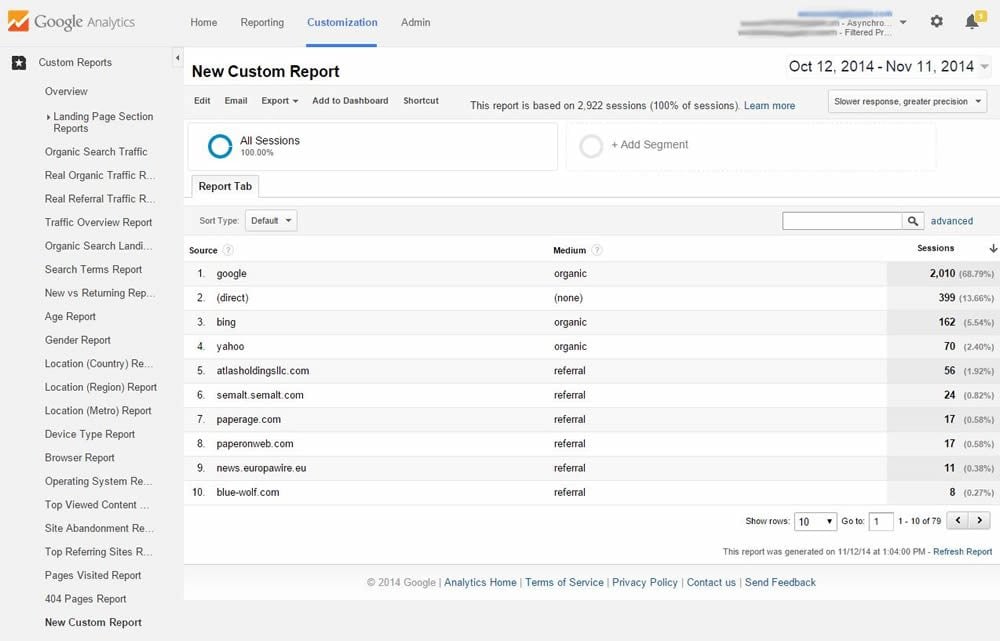Secondary Dimension in Google Analytics: Unlocking Advanced Metrics
Secondary Dimension in Google Analytics: Unlocking Advanced Metrics
Blog Article
Unlock Deeper Insights With Secondary Dimension in Google Analytics
With the large expanse of data readily available in Google Analytics, the utilization of second measurements can considerably improve your analytical capacities. By strategically integrating second measurements into your analysis, you can discover useful insights that could otherwise remain obscure - Secondary Dimension in Google Analytics.
Understanding Key Vs. Secondary Measurements
When examining data in Google Analytics, it is important to distinguish in between second and main measurements to gain deeper insights right into customer habits. Primary dimensions are the major groups whereby you can watch your data, such as gadget, source/medium, or touchdown web page. These dimensions offer the basic structure for organizing and understanding your information. On the other hand, second measurements allow you to additional study your primary dimension information. By adding an additional dimension, you can layer on added information to your primary measurement, allowing a much more granular analysis. For instance, if your primary dimension is the source/medium where users showed up on your website, adding a second measurement like geographical area can reveal where those customers lie geographically. This included layer of details can assist you identify trends, patterns, or anomalies that may not have appeared when taking a look at the key measurement alone. As a result, leveraging both secondary and key measurements in Google Analytics is critical for thorough information analysis and notified decision-making.
Using Secondary Dimensions Efficiently
Successfully using second measurements in Google Analytics enhances the depth and granularity of information analysis, supplying important understandings into individual actions and patterns. By integrating additional dimensions alongside primary dimensions, experts and marketing professionals can delve much deeper right into the specifics of user communications on their internet sites. Second measurements allow individuals to sector and filter primary dimension information further, supplying an extra comprehensive view of customer demographics, communications, and habits. This can be specifically valuable when trying to recognize the influence of certain variables on individual interaction, such as the browsers or tools they are using, the sources of their traffic, or their geographic locations.
In addition, secondary measurements enable individuals to compare and contrast different information points within a single report, assisting in an extra comprehensive analysis of customer habits patterns. By leveraging secondary dimensions properly, organizations can uncover concealed insights, enhance their advertising and marketing techniques, and enhance the general user experience on their internet sites.
Discovering Typical Secondary Dimension Mixes
To even more analyze individual behavior and patterns in Google Analytics, it is beneficial to check out typical combinations of secondary dimensions. Some usual second dimension mixes that give beneficial understandings consist of examining website traffic resources with customer areas to understand where website site visitors are coming from geographically and how they discovered the site. Taking a look at user habits metrics with secondary measurements such as demographics or interests can aid in targeting certain target market sections more properly.
Using Additional Dimension in Personalized Information
Making use of secondary dimensions in custom records permits a more extensive analysis of data in Google Analytics, improving the depth of understandings gotten. When producing customized records in Google Analytics, including secondary measurements can offer a much more thorough view of how different measurements connect with each other. This function allows individuals to delve much deeper right into their information and reveal useful relationships that might not be instantly evident.
By applying additional navigate to these guys dimensions in personalized records, individuals can gain a much better understanding of their web site or application website traffic. For example, integrating the primary dimension of "source/medium" with the additional measurement of "landing web page" can reveal which touchdown web pages are performing ideal for web traffic coming from details sources. This insight can help marketing professionals enhance their projects and improve overall conversion prices.

Enhancing Information Visualization With Second Dimension
When checking out information in Google Analytics custom reports, including secondary measurements not just supplies a more comprehensive analysis however also boosts the visual representation of insights with data visualization. By adding a second measurement to your records, you can enhance the way data exists, making it much like it easier to recognize patterns, trends, and correlations within your website's efficiency metrics.
Second measurements can help you segment your information additionally, permitting a much deeper understanding of customer behavior and interactions on your site. When attempting to separate particular variables that may impact your website's performance., this enhanced degree of granularity can be especially helpful.

Conclusion
To conclude, leveraging secondary dimensions in Google Analytics enables a much more extensive evaluation of data, leading to much deeper insights and even more educated decision-making. Secondary Dimension in Google Analytics. By including extra layers of information to key data collections, marketing professionals and experts can uncover hidden patterns, patterns, and relationships that give a granular view of individual behavior and interactions. This enhanced degree of insight allows optimization of projects and tailored methods for specific target market sectors, ultimately improving performance and conversion prices
On the other hand, second dimensions allow you to further study your main measurement information. By adding a second dimension, you can layer on extra details to your main measurement, allowing a index much more granular evaluation. If your key measurement is the source/medium through which individuals got here on your website, including a second measurement like geographic area can expose where those users are situated geographically. By integrating additional measurements alongside main measurements, marketers and experts can dive deeper right into the specifics of individual interactions on their sites. Additional measurements permit individuals to section and filter primary measurement data additionally, providing an extra detailed sight of user demographics, habits, and communications.
Report this page